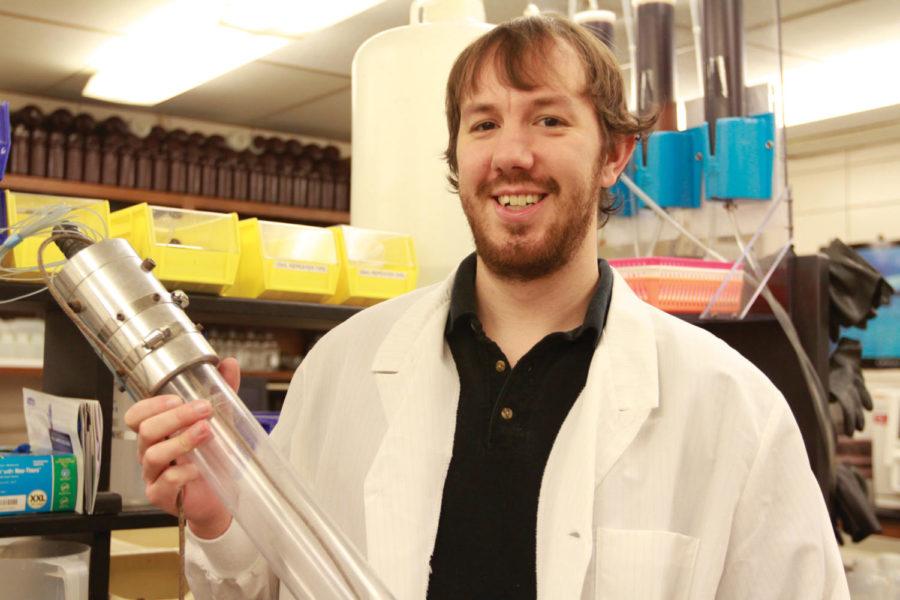Historic sediment study of Iowa lakes will aid in restoration
February 26, 2012
A first-of-its-kind ISU study of historic sediment conditions in Iowa lakes is expected to make lake restoration projects more effective.
For the past three years, a research team from the department of evolution, ecology and organismal biology has sampled 34 natural Iowa lakes and studied the changing sediment conditions in the past 150 years.
“The study helps us understand what natural lakes looked like throughout history, especially before settlement about 150 years ago,” said Christopher Filstrup, post-doctoral research associate in the EEOB department. “This is important because the goal of restoration is to return lakes to their original water quality.”
The research was funded by the Department of Natural Resources, as it is a first step in restoring Iowa’s lakes to ideal conditions.
“This information gives us a starting point for lake restoration,” said Mike McGhee, Iowa Department of Natural Resources program manager for lake restoration. “We will be able to set goals and decide how we want to improve water quality.”
Historic lake water quality can be understood by examining past sediment conditions. Sediment contains organic and inorganic nutrients that may be deposited into lakes by human practices, such as sewage and fertilizers.
In addition, the amount of sediment deposited in lakes can reflect topsoil runoff due to urbanization and farming practices.
Each of the 34 natural lakes was studied by collecting 6-foot cores of sediment and examining the nutrients present within a section. Using a method similar to carbon dating, the sections of sediment were dated using a radioisotope of lead.
Adam Heathcote, graduate research assistant in the EEOB department, said one of the most interesting results from the study was that not all lakes started at the same sediment quality.
“Some lake sedimentation rates and nutrient levels were much worse since settlement, but some were surprisingly similar in quality as they were in the past,” he said. “We compared baseline nutrient levels of the lakes and saw how they must be worked with on an individual basis.”
The study looked at the lakes individually, which will help DNR restoration projects to be tailored to individual lakes, rather than setting one standard restoration practice for all lakes, McGhee said.
By understanding the sediment conditions throughout history, a correlation can be made with human influences. The study specifically helps identify nutrient deposits and land use practices.
“It really affirmed how much impact human activities have on natural systems,” Filstrup said. “The ability to see the practices that negatively influenced lake water quality will allow us to develop new strategies and correct previous human practices.”







